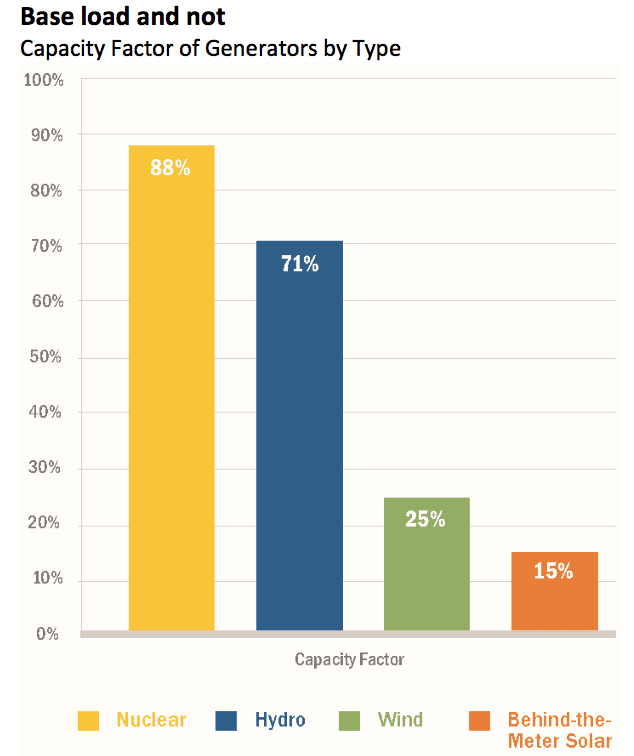In his 1964 ballad, Bob Dylan, now a Nobel laureate in literature, talks about the changing times. The tune has over 12 million hits on YouTube. Its message clearly still resonates.
Looking at the latest state of the market report from New York ISO, it is easy to see why. The electricity markets in New York and elsewhere, like the global oil and energy markets, are undergoing massive transformation at an unprecedented speed.
In a report titled Power Trends: New York’s Evolving Electric Grid 2017, NY ISO provides a sweeping picture of just how fast time are a changin’. It is a good read for anyone interested in the rapidly evolving electric utility business, from top to bottom. In the report’s introduction, CEO Bradley Jones mentions the usual suspects in highlighting the major drivers of change,
“… the growth in distributed energy resources; public policy initiatives and resulting regulatory oversight challenges; the economic impacts of sustained low natural gas prices on future asset investment and plant operations; and the challenge of developing large scale renewable resources …”

It is a familiar list, with familiar impacts. The report goes on to say,
“Today’s grid has grown in complexity as historical patterns give way to emerging trends that reflect technological advances in how electricity is generated and consumed.”
Complexity aside, the NYISO says
“Year-over-year growth in the overall usage of electric energy from New York’s bulk electric system continues to be at or to decline slightly over the next decade. Peak demand, which is a critical element to reliable system planning, is projected to grow at a more moderate pace than previous forecasts.”
Parts of the report sounds similar to the Finkel Report.

Clearly, electricity consumption – the most fundamental parameter in any network – appears to have peaked and is expected to go south given the continued effects of energy efficiency and behind- the-meter generation (visuals on page 12,top).
As new renewables and self-generation begin to come on line, the grid operator has to accommodate their differing characteristics, most important their variability and pattern of generation as reflected in the capacity factors in visual on page 12, bottom.
Like everywhere else, distributed solar is projected to grow but not as much as, say, in California. Consequently, while NYISO is projected to experience a mini version of California’s famous duck curve in the winter, the impact will not be as pronounced in typical summer days (visuals on left) – it is a rather different story.
Not surprisingly, NYISO is planning ahead for more distributed energy resources over time, driven in part by the Reforming the Energy Vision (REV) proceedings and other state-level mandates. Its game plan is to integrate DERs into the wholesale market
as best and as soon as it can – conceptually illustrated in visual below.
Not unlike all others looking at the future of the power sector, NYISO has a vision of how the current industry landscape is likely to change – as schematically illustrated in visual on page 14. In describing its vision NYISO says,
“The roadmap offers routes to a future where consumers and emerging technologies support more optimized grid utilization. It offers NYISO’s seamlessly transitioning from a primarily central station-based grid to a diverse bi-directional grid.”

Conceptually, the NYISO’s roadmap is intriguing. Putting the pieces together, especially given the fact that the grid operator is mostly divorced from customers and especially what they do behind- and beyond- the-meter, however, won’t be easy.
In nearly all markets, the grid operators currently do not see, nor can they control or manage, what goes behind the meter. They only see the residual or net demand on the network, that is net of DERs, which includes distributed generation, storage, EVs, energy efficiency improvements and more. For example, should peer-to-peer electricity trading take place behind the meter, not currently allowed in most places.
NYISO has another major headache that makes its job even more challenging. It has to do with the Empire State’s rather unique geography. Looking at the map (page 15), the state’s population & load is highly concentrated in Manhattan Island, Long Island and surrounding areas – heavily populated, congested with major commercial, services, retail, dense residential and all sorts of light and medium-size industries.
Getting power to this congested and hard to reach area has traditionally been difficult. Hong Kong, San Francisco and other dense load centers in hard to reach places offer similar challenges, perhaps even worse.
Virtually all network operators have to deal with congestion as urban centers continue to draw more population. This challenge is not likely to get any easier any time soon.
The most important point of the NYISO’s message, however, is the observation that the grid of the future will not only become more decentralized and de-carbonized, but it will increasingly be bi-directional, if not multi-directional.
Perry Sioshansi is president of Menlo Energy Economics, a consultancy based in San Francisco, CA and editor/publisher of EEnergy Informer, a monthly newsletter with international circulation. He can be reached at [email protected]











